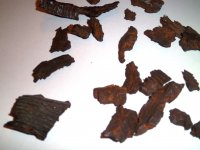Virginiaguy
Jr. Member
- Jun 29, 2019
- 40
- 152
- Detector(s) used
- Fischer 1266-X
- Primary Interest:
- All Treasure Hunting
Greetings........been off the site for a few months.....trying to shake off Lyme disease I suspect I picked up looking for points. So anyway, I was poking around in my basement this morning and found a box of civil war finds I dug a number of years ago. Mostly Artillery fragments and some other odd's and ends. Please share comments in you recognize any of this stuff. Thanks to all.
Amazon Forum Fav 👍
Attachments
Upvote
0











